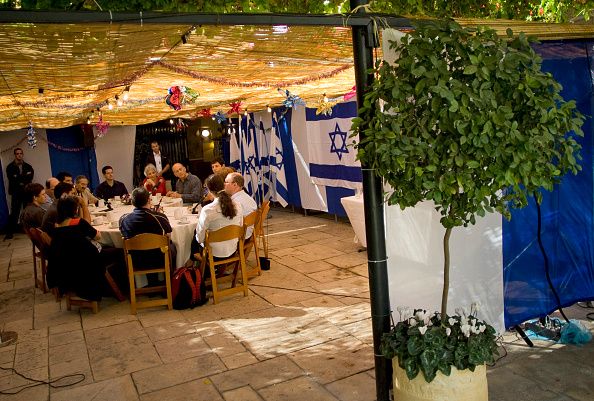
If it seems like this time of year is just one long string of Jewish holidays, that's because it is. It doesn't end after the High Holidays—Rosh Hashana and Yom Kippur—though those are still the most important holidays of the season and arguably of the entire year. Next up is Sukkot (the Hebrew-derived pronunciation in English is Sue-COAT).
What is Sukkot?
Sukkot is a Jewish holiday that celebrates and gives thanks for the fall harvest and also commemorates the 40 years the Israelites spent wandering the desert and living in temporary shelters after leaving slavery in Egypt. A sukkah is a "booth" or "hut," and sukkot is the plural form. The holiday also can be referred to by other names, such as the Festival of Booths, the Season of Our Rejoicing, and the Festival of the Ingathering.
When does Sukkot start and end in 2017?
Sukkot is a weeklong festival that begins this year at sundown on Wednesday, October 4, and continues until sundown on Wednesday, October 11. It begins on the 15th day of Tishrei on the Jewish calendar, five days after Yom Kippur.
The first two days, from sundown on Wednesday, October 4, to nightfall on Friday, October 6, are "full" holidays (in Israel it's just one day), while the next days, from nightfall on Friday, October 6, until sundown on Wednesday, October 11, are in-between days considered quasi holidays. The latter are called Chol Hamoed, which literally translates as "the weekday of the holiday."
They are bookended on the other side by a separate but related holiday called Shemini Atzeret and Simchat Torah, or "eighth day of assembly" and "rejoicing of/with the Torah." In the U.S., they begin at sundown on Wednesday, October 11 and continue until nightfall on Friday, October 13 (again this holiday is only one day in Israel). Sukkot generally takes place in September or October (see here for why the holiday is not celebrated on the same exact date each year).
How is Sukkot celebrated?
The namesake and most iconic ritual of the holiday is the sukkah, built at home and/or at the synagogue or other communal space. The temporary booth or hut needs to have at least three walls (only one of which can be an existing wall), usually constructed with canvas, wood or metal. It's covered with natural vegetation, like loose branches from trees or anything that grows out of the ground. They provide cover, but are meant to be sparse enough that you can see the stars through them.
According to tradition, Jews eat all their meals in the festively decorated sukkah during the weeklong festival, which often includes festive gatherings of family and friends. It's a custom to extend hospitality during Sukkot, especially to the needy. A special prayer is added before meals in the sukkah: "Blessed are You, Adonai our God, sovereign of the universe, who has sanctified us through your mitzvot and commanded us to dwell in the sukkah."
What are the "four kinds" or "four species"?
Another ritual of Sukkot involves the four species or four kinds. These are an etrog (citron), a lulav (palm frond), three hadassim (myrtle twigs) and two aravot (willow twigs). The Bible says Jews are meant to "take" these items during Sukkot, but some Jews interpret it as a ritual performed by reciting a blessing, bringing the four species together and waving them in every direction. Some Jews also use the four kinds during the recitation or singing of a collection of psalms as part of a morning service. The lulav—which is sometimes described as a combination of the palm, myrtle and willow—and etrog are often used as part of the festive decorations on the sukkah.
Uncommon Knowledge
Newsweek is committed to challenging conventional wisdom and finding connections in the search for common ground.
Newsweek is committed to challenging conventional wisdom and finding connections in the search for common ground.
About the writer
Stav is a general assignment staff writer for Newsweek. She received the Newswomen's Club of New York's 2016 Martha Coman Front ... Read more
To read how Newsweek uses AI as a newsroom tool, Click here.






